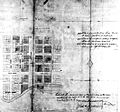
Tallahassee is the capital city of the U.S. state of Florida. It is the county seat and only incorporated municipality in Leon County. Tallahassee became the capital of Florida, then the Florida Territory, in 1824. In 2020, the population was 196,169, making it the 8th-largest city in the U.S state of Florida, and the 126th-largest city in the United States. The population of the Tallahassee metropolitan area was 385,145 as of 2018. Tallahassee is the largest city in the Florida Big Bend and Florida Panhandle region, and the main center for trade and agriculture in the Florida Big Bend and Southwest Georgia regions.

Wakulla County is a county located in the Big Bend region in the northern portion of the U.S. state of Florida. As of the 2010 census, the population was 30,776. Its county seat is Crawfordville.

St. Marks is a city in Wakulla County, Florida, United States. It is part of the Tallahassee metropolitan area. The population was 293 at the 2010 census. As of 2018, the population estimated by the U.S. Census Bureau is 319.
St. Joseph was a boomtown that briefly became the largest community in Florida, United States, before being abandoned less than eight years after it was founded. St. Joseph was founded in 1835 on the shores of St. Joseph Bay. A brief period of prosperity was ended by a yellow fever epidemic in 1841, and the abandoned remnants of the town were destroyed by a storm surge in 1844. The town site is in Gulf County, Florida, near the city of Port St. Joe.
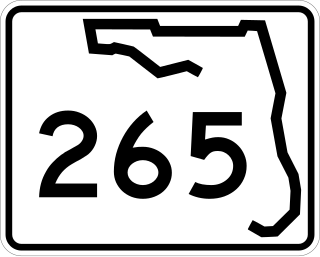
State Road 265 is a short north–south route in Tallahassee.

Newport is a small unincorporated community in Wakulla County, Florida, United States of America, situated where U.S. Highway 98 meets State Road 267.

Miccosukee is a small unincorporated community in northeastern Leon County, Florida, United States. It is located at the junction of County Road 59 and County Road 151. Miccosukee was a major center of the Miccosukee tribe, one of the tribes of the developing Seminole nation, during the 18th century.
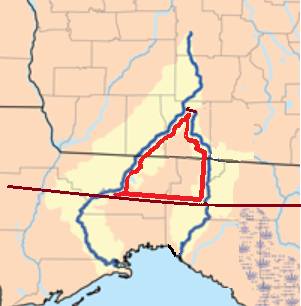
The Red Hills or Tallahassee Hills is a region of gently rolling hills in the southeastern United States. It is a geomorphic region and an ecoregion.

The St. Marks Light is the second-oldest light station in Florida. It is located on the east side of the mouth of the St. Marks River, on Apalachee Bay.
The Tallahassee Railroad, headquartered in Tallahassee, Florida, was one of the first two railroads in Florida, starting operations in 1836 or 1837. It did not successfully use steam locomotives until 1855, with trains being pulled by mules for more than 20 years. The principal source of traffic on the railroad for many years was carrying cotton bales from Tallahassee to seaports on the St. Marks River.
The history of Leon County, Florida, much like the History of Tallahassee, dates back to the settlement of the Americas. Beginning in the 16th century, the region was colonized by Europeans, becoming part of Spanish Florida. In 1819, the Adams–Onís Treaty ceded Spanish Florida, including modern-day Leon County, to the United States. Named for Spanish explorer Juan Ponce de León, Leon County became an official U.S. county in 1824; the American takeover led to the county's rapid expansion as growing numbers of cotton plantations began to spring up nearby, increasing Leon County's population significantly.

Port Leon, Florida was a river port town located in what is now Wakulla County, Florida, which existed for only about six years in the first half of the 19th century. Port Leon is classified as an "extinct city" by the State Library and Archives of Florida and only remnants can be found today.
The history of Tallahassee, Florida, much like the history of Leon County, dates back to the settlement of the Americas. Beginning in the 16th century, the region was colonized by Europeans, becoming part of Spanish Florida. In 1819, the Adams–Onís Treaty ceded Spanish Florida, including modern-day Tallahassee, to the United States. Tallahassee became a city and the state capital of Florida in 1821; the American takeover led to the settlements' rapid expansion as growing numbers of cotton plantations began to spring up nearby, increasing Tallahassees' population significantly.

Fort Braden is a historic location and census-designated place (CDP) in western Leon County, Florida, United States. It was first listed as a CDP in the 2020 census with a population of 1,045.
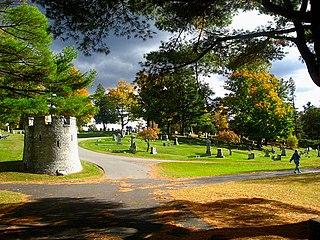
Mount Hope Cemetery in Bangor, Maine, is the second oldest garden cemetery in the United States. It was designed by architect Charles G. Bryant in 1834 and built by the Bangor Horticultural Society soon after, the same year that Bangor was incorporated as a city. The cemetery was modeled after Mount Auburn Cemetery (1831) in Boston, Massachusetts. Bangor was at that time a frontier boom-town, and much of its architecture and landscaping was modeled after that of Boston. The site has been listed on the National Register of Historic Places.
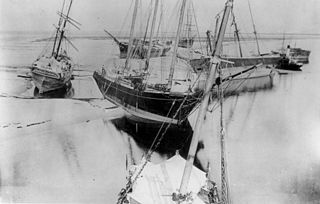
James A. Garfield was an American three-masted bark which was wrecked on the Gulf coast of Florida.
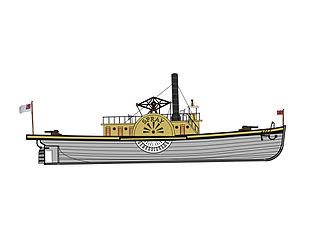
The CSS Spray was a steam-powered, side-paddle wheel tugboat built in New Albany, Indiana originally fitted as a mercantile ship before becoming a gunboat in the Confederate States Navy and used in the St. Marks, Newport, Florida area.
Daniel Ladd was born in Augusta, Maine and was an exporter, cotton broker and merchant in early Florida and active as a member of the Secession Convention of Florida.
The following is a timeline of the history of the city of Tallahassee, Florida, USA.

Benjamin Chaires (1786–1838) was an American planter, land owner, banker and investor in Territorial Florida, and may have been the richest man in Florida in the 1830s. He was involved in the creation of the first railroads in Florida.



